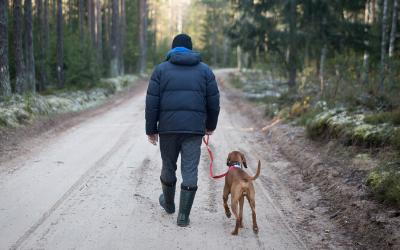
- posted: Apr. 02, 2020
What is COVID-19?
COVID-19 is a human respiratory disease that was initially discovered in late 2019. This disease is caused by a new coronavirus, SARS-CoV-2, that has not previously been identified.
Coronaviruses are a family of viruses that cause a variety of diseases. The common cold in humans is caused by a type of coronavirus. Different coronaviruses also cause clinical signs in animals, including diarrhea in dogs and feline infectious peritonitis (FIP) in cats.
It is important to understand, however, that while all coronaviruses are related, they are not the same virus. For example, SARS-CoV-2 cannot cause canine coronavirus, and vice versa.
What is social distancing?
Social distancing is one of the most effective strategies available to reduce the spread of COVID-19. When people are in close contact, it is easy for a viral infection to spread between them. When there is more distance between people, it is more difficult for a virus to spread. Social distancing is the act of intentionally creating distance between peple, in order to slow the spread of disease.
Social distancing includes the following principles:
- Stay home as much as possible
- Avoid crowds
- Limit errands and social gatherings
- Work from home
- Stay 6 feet (2 meters) away from others when in public
By limiting close personal contact, it becomes more difficult for the virus to spread from person to person. Over time, the goal is that this social distancing will slow the spread of COVID-19.
What are the effects of social distancing on pets?
For the most part, this should be an enjoyable time for your pets. Many of our pets are home alone all day while we are at work or engaged in other activities. During this time of social distancing, you are likely spending more time at home than usual. As long as you are not feeling sick, take advantage of this time to enjoy some extra cuddles and playtime with your pets.
It is healthy to spend time outdoors while social distancing, as long as you are feeling well and can remain at least 6 feet away from other people. Avoid crowded areas like dog parks and busy trails, but quiet neighbourhood streets and less-popular trails can give you an excellent opportunity to get outside for a long walk with your dog. Fresh air and exercise will likely alleviate some of the stress and anxiety you may be feeling, while also helping to provide fun and exercise for your dog.
If you have cats, find new ways to play with them indoors. There are many different types of cat toys available (many of which can be ordered online, allowing you to avoid a shopping trip), but cardboard boxes and balled-up paper that you likely already have at home can also provide a source of entertainment for both you and your cat.
If I have multiple pets, or different types of pets, should I keep them separate?
At this time, there is no evidence that pets can become infected or transmit the virus to another animal, whether that be dog to dog, cat to cat, or between different species of pets (dog to cat for example). Therefore, there is no need to keep your pets separated from each other. Taking your pet to a boarding facility or veterinary clinic is also okay, as long as you avoid close contact with employees and other clients.
How do I protect my pets if I get sick?
At this time, there is no evidence to suggest that pets can contract or transmit COVID-19. At this time, however, this is a new virus and it is not fully understood. For this reason, it is best to limit your contact with your pets if you are sick.
If possible, have another family member care for pets while you are ill. This will minimize health risks to both you and your pet. If you must care for your pet yourself, try to minimize contact while doing so. Limit petting and cuddling of your pets and avoid sharing food. Wash your hands thoroughly after handling your pets.
What if my pet needs veterinary care during this period of social distancing?
Many veterinary clinics are adjusting their policies to reflect social distancing guidance related to COVID-19. If your pet needs veterinary care (or if you need to pick up medication, a prescription diet, etc.), call your veterinary hospital first to determine how to proceed. You may be asked whether you have been exposed to anyone with COVID-19 and/or whether you have had any respiratory signs of fever. Based on this information, they will determine the safest way to care for your pet.
Expect that your veterinary visit may look or feel a little different during this time period. Some practices are taking pets to the treatment area for exams and diagnostics, in order to limit the amount of time that team members and clients spend confined in exam rooms together, while other practices are offering curbside service and allowing clients to wait in their cars. Regardless of their approach used during your visit, understand that your veterinarian is doing his or her best to maximize your safety, your pet's safety, and the safety of the veterinary team.
Blog provided by: LifeLearn Inc.
Contributors: Catherine Barnette, DVM.
© Copyright 2020 LifeLearn Inc. Used and/or modified with permission under license.
Book an appointment using the form below or call us at
Mississauga
5025 Heatherleigh Ave #5
Mississauga, ON, Canada
